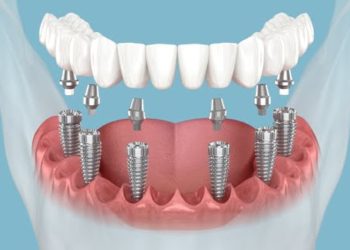If you ever dreamed of a dazzling “Hollywood” smile that looks naturally flawless, zirconium crowns in Istanbul might be the best-kept beauty secret. Turkey has emerged as one of the world’s top destinations for dental tourism, offering advanced dental technologies and expert dentists at all-inclusive, affordable prices. Among various treatments, international patients from the UK, France, Germany, Ireland, the USA, Canada, Poland, and Spain seek zirconium crowns, which are fast becoming the gold standard in smile makeovers.
With CureTurkey, patients can now book an All-Inclusive Smile Makeover Package featuring 20 Zirconium Crowns in Istanbul for just €2,750, compared to the regular European price of €3,500 or more, thereby saving up to €750 while enjoying world-class care, luxury accommodations, and seamless travel coordination.
What makes zirconium crowns special?
Zirconium crowns, also known as zirconia crowns, represent a modern advancement in cosmetic and restorative dentistry. These are made from zirconium dioxide, a high-strength ceramic, and are valued for their strength, biocompatibility, and natural translucency, which closely simulates the appearance of real tooth enamel.
There is no metal base in zirconium crowns, unlike traditional porcelain-fused-to-metal crowns, so they are completely natural-looking even in the brightest light. They do not chip, stain, or wear down over time either. For long-term outcomes, when patients aim to achieve a bright and confident smile, zirconia crowns provide the ideal balance between aesthetics and functionality.
Why Choose Istanbul for Zirconium Crowns?
Istanbul is fast becoming a favourite worldwide destination for dental tourism, and for good reason. People come to Istanbul not just because of the affordable prices, but also for the quality of dental care and the luxurious travel experience that is combined.
World-class competence:
It’s highly qualified and internationally certified dentists, such as Dr Fian Derviş, who is considered a well-recognised Oral and Maxillofacial Dentist at Dental Bosphorus, specialising in advanced smile design, facial aesthetics, and surgical corrections. With over 10 years of professional experience, he has established a reputation for his precision and artistic approach to cosmetic dentistry.
Accredited Dental Clinics:
Such clinics, like Dental Bosphorus in Istanbul, guarantee European standards regarding hygiene and equipment. By utilising CAD/CAM technology, which enables computer-aided design and manufacturing, patients receive crowns that are perfectly fitted.
Affordable Packages
For example, while it would cost between €5,000 and €8,000 for zirconium crowns in the UK or the USA, Istanbul offers a full smile makeover with 20 crowns for €2,750, including treatment, hotel stay, transfers, and 24/7 patient support.
Tourism and Recovery Combined
Of course, Istanbul is not all about dentistry; it’s a city of great historical and cultural significance, complemented by numerous ways to unwind. Many patients enjoy recovering by seeing iconic landmarks, taking Bosphorus cruises, or shopping in the Grand Bazaar.
Inside the All-Inclusive Zirconium Crown Package
Enjoy a comfortable end-to-end experience with CureTurkey’s All-Inclusive Smile Makeover Package, featuring 20 Zirconium Crowns. The treatment includes:
- 10 Zirconium Crowns/Veneers in the Upper Jaw
- 10 zirconium crowns/veneers in the lower jaw
- Duration: 6 days in Istanbul
- Package Inclusions:
- Consultations and Treatment Planning by Dentists
- All surgical and laboratory fees
- Use of quality dental materials
- Dental X-rays before the procedure
- Local anaesthesia and pain management
- 4–5-star hotel accommodation
- Airport pickup and drop-off
- Clinic-to-hotel transfers
- Language interpreters and currency exchange assistance
- 24/7 patient care and local support
From arrival to the last smile reveal, CureTurkey’s treatment package handles everything, which in turn keeps the hassle of planning away and assures a seamless medical travel experience.
The Advantages of Zirconium Crowns
A natural aesthetic: Zirconium is translucent; hence, it can let the light pass, just like natural teeth, making your smile luminous and natural.
Durability: Zirconium crowns resist cracking, staining, and corrosion, and can last 15-20 years with proper care and maintenance. The material is hypoallergenic and, therefore, appropriate even for patients with hypersensitivity to metals.
Precision Fit: 3D imaging means each crown fits perfectly and without discomfort.
Stain Resistance: Zirconium crowns are ideal for coffee and wine enthusiasts, as they retain their colour for years.
Why Choose CureTurkey?
CureTurkey is a medical travel facilitator that connects patients with recognised and accredited hospitals and specialist dentists in Turkey. Their mission is to make healthcare travel easier by offering verified dental clinics and surgeons, transparent treatment packages, seamless end-to-end travel coordination (including flights, transfers, and accommodation), 24/7 multilingual support, and visa and documentation assistance, whether you are from the UK, France, Germany, Ireland, or North America.
CureTurkey will make your dental journey in Turkey smooth, safe, and affordable.
Ready to Redefine Your Smile?
Your smile is one of your most powerful assets, and now you can make it truly unforgettable. Zirconium crowns in Istanbul give you the brilliance of modern dentistry, luxurious comfort, and unmatched savings all in one package.











































































